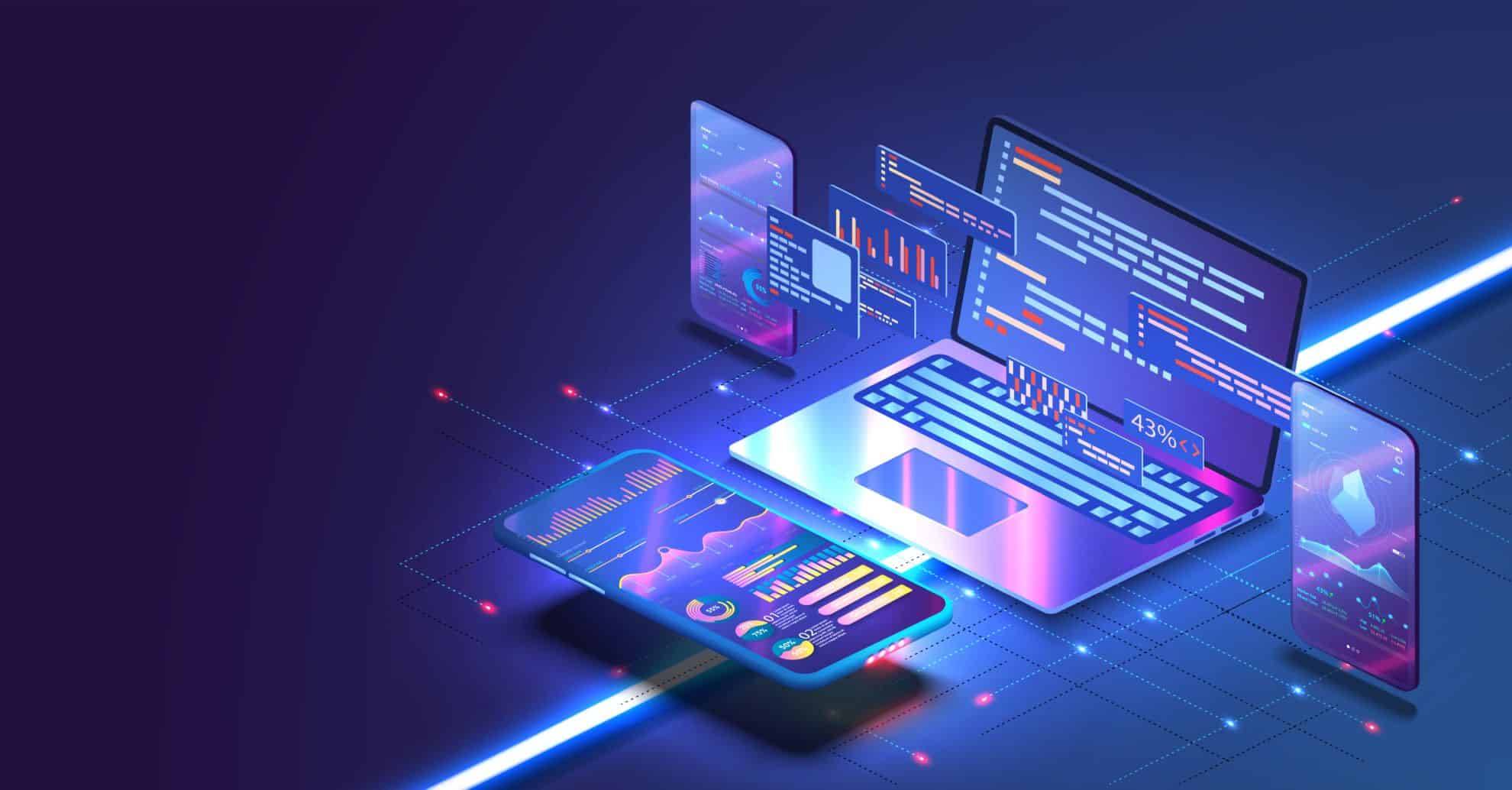Introduction: Why Mobile App UI Trends Matter
In the ever-evolving world of mobile technology, mobile app UI trends are crucial for crafting engaging, intuitive, and seamless user experiences. A well-designed mobile user interface (UI) doesn't just look good—it directly influences user retention, satisfaction, and overall app success. As smartphones become central to daily life, users demand more visually appealing, responsive, and user-centric designs.
This article explores the latest mobile app UI trends, highlighting how these innovations are transforming the way people interact with digital products. Whether you're a UI/UX designer, mobile app developer, or a business owner looking to build an app, staying on top of current UI trends is key to staying competitive.
Neumorphism: Soft UI Comes Alive
Neumorphism—short for “new skeuomorphism”—brings a soft, tactile feel to mobile app interfaces. It combines background colors, highlights, and shadows to simulate a 3D effect.
Key Features:
-
Soft shadows and highlights
-
Minimal color palettes
-
Embossed and debossed elements
Example:
Banking apps like Credit Agricole use neumorphism to make interfaces feel intuitive and secure.
Why it’s trending:
It creates a modern yet familiar experience, offering a sense of depth without overwhelming visuals.
Voice-Activated Interfaces (VUI)
With smart assistants integrated into mobile devices, voice user interfaces (VUIs) are gaining popularity. Designing with voice in mind means prioritizing accessibility, speed, and hands-free interaction.
Key Design Elements:
-
Visual cues for speech recognition
-
Voice-first onboarding
-
Minimalist fallback UI for touch
Example:
Google Assistant and Siri-powered apps like reminders, navigation, and smart home tools.
Microinteractions for Delight
Microinteractions are subtle animations or feedback responses that occur when a user performs an action—like liking a post or sending a message.
Why They Matter:
-
Enhance usability by giving feedback
-
Provide visual delight
-
Guide users through flows intuitively
Example:
The animation that plays when you “like” a post on Instagram or Twitter is a microinteraction.
Personalized UI with AI and Behavior Learning
AI is helping designers deliver personalized mobile UI based on user data like location, activity, and usage patterns.
How It Works:
-
Dynamic content arrangement
-
Personalized recommendations
-
Adaptive UI based on preferences
Example:
Streaming apps like Spotify and Netflix adapt their interface to user behavior, offering a tailored experience.
Gesture-Based Navigation
As bezels shrink and screens expand, gesture-based navigation is replacing traditional buttons. Users now swipe, pinch, drag, and tap in complex ways to interact with apps.
Benefits:
-
More screen space
-
Intuitive movements
-
Smoother interaction
Example:
Instagram’s swipe-up stories and iPhone’s navigation gestures are standard implementations.
Dark Mode as Default
Dark mode UI isn’t just a trend—it’s becoming a user expectation. It’s easier on the eyes, reduces battery consumption, and offers a sleek aesthetic.
Best Practices:
-
Offer dark and light modes
-
Maintain readability and contrast
-
Test for accessibility
Brands Using It:
Twitter, Facebook Messenger, WhatsApp, and Android 12.
Augmented Reality (AR) Integration
With AR frameworks like ARKit and ARCore, designers are integrating augmented reality UI into mobile apps for immersive user experiences.
Industries Benefiting:
-
E-commerce (virtual try-ons)
-
Real estate (interactive home tours)
-
Education (visual learning apps)
Example:
IKEA Place allows users to see how furniture will look in their room via AR UI.
Glassmorphism for a Futuristic Feel
Glassmorphism involves using frosted-glass-like elements—semi-transparent layers with blur effects. It adds depth and visual hierarchy without clutter.
Visual Elements:
-
Transparency
-
Blur backgrounds
-
Vivid colors and gradients
Popular In:
Modern iOS and macOS systems.
Card-Based Design for Information Hierarchy
The card-based UI design is an evergreen layout strategy. It organizes content into individual, easy-to-digest cards—ideal for scroll-based interfaces.
Why It Works:
-
Responsive across devices
-
Enhances readability
-
Great for organizing news, products, or social posts
Example:
Google Now, Pinterest, and LinkedIn use card layouts extensively.
Bottom Navigation for One-Handed Use
With larger phone screens, bottom navigation bars improve usability, allowing users to reach the most important actions with their thumbs.
Design Tips:
-
Keep it under five icons
-
Use intuitive labels
-
Offer gesture support if needed
Brands Doing It Right:
YouTube, Instagram, and WhatsApp.
Motion Design and Animations
Motion UI creates a dynamic, engaging experience that guides the user through transitions and states.
Uses:
-
Loading animations
-
Page transitions
-
Pull-to-refresh effects
Example:
Duolingo uses fun animations for progress tracking and language success cues.
Data-Driven Dashboards
Apps like health trackers, finance tools, and business platforms are leaning into visual dashboards to present data in digestible formats.
Design Essentials:
-
Use infographics
-
Prioritize readability
-
Allow real-time updates
Example:
Fitbit and Google Fit provide beautiful, usable dashboards.
Ethical and Accessible UI Design
With growing awareness of digital accessibility, ethical UI is not optional. Inclusivity and clarity lead the way.
Best Practices:
-
Text alternatives for images
-
Color contrast compliance
-
Scalable fonts
-
Touch-friendly elements
Example:
Government apps and healthcare platforms prioritize accessibility.
Real-World Example: Starbucks App
The Starbucks mobile app is a perfect example of combining many of these trends:
-
Card-based UI for offers and orders
-
Personalization with location-based ordering
-
Dark mode support
-
Microinteractions for loyalty points
FAQs
1. What is the most popular mobile UI design trend today?
Dark mode and gesture-based navigation are currently leading due to user comfort and screen real estate optimization.
2. Why is mobile UI important in app development?
A strong UI ensures a positive user experience, boosts engagement, and lowers app abandonment rates.
3. How can I implement personalization in mobile UI?
Use analytics and user behavior data to adjust layout, content, and theme dynamically based on user preferences.
4. What tools can help design modern UI for mobile apps?
Figma, Adobe XD, Sketch, and InVision are popular tools for prototyping and design.
5. Are animations important in mobile UI design?
Yes. Animations improve feedback, guide navigation, and add delight—when used appropriately and sparingly.
Conclusion: Stay Ahead of the Curve
Staying updated with mobile app UI trends isn’t just about aesthetics—it’s about enhancing functionality, accessibility, and user satisfaction. From neumorphism to gesture navigation, today’s trends shape the way users connect with mobile experiences. Whether you're building a startup app or modernizing an enterprise solution, embracing these design principles ensures your product stands out in a crowded marketplace.







